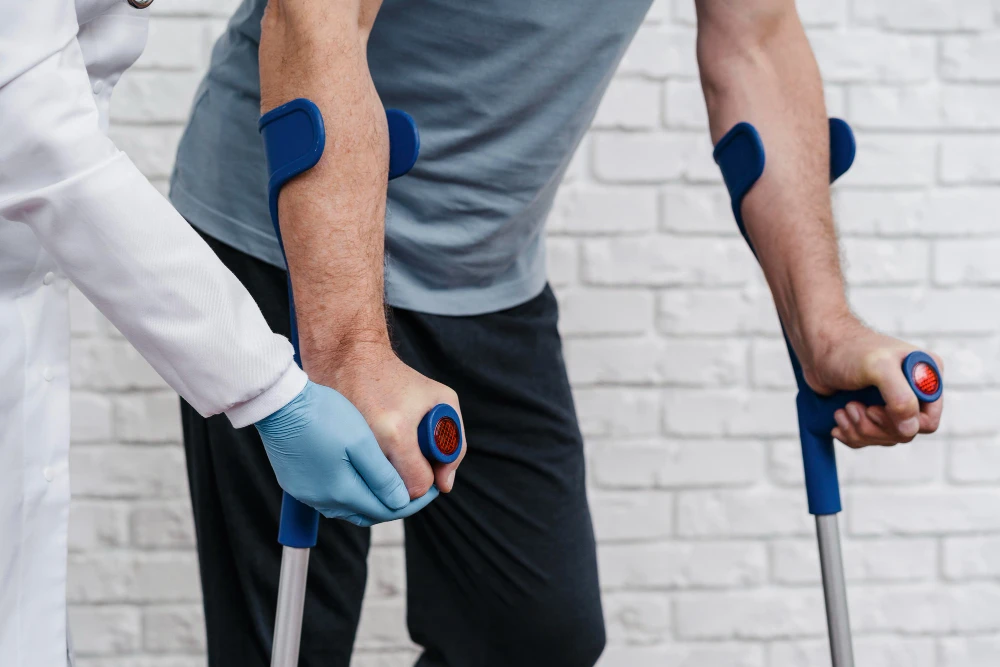
Let me tell you about Mrs. Thompson (not her real name), a retired nurse who came to my Langley clinic last spring after her hip replacement. She’d been told the surgery went perfectly, but two months later, she still couldn’t walk to the mailbox without pain. “I thought I just needed more time,” she confessed. Her story is why I’m writing this – because too many people don’t realize how much proper rehab matters after surgery.
The Missing Piece in Surgical Recovery
Modern medicine works miracles in the operating room, but here’s what often gets overlooked:
- Surgery fixes the damage – but your body forgets how to move properly
- Scar tissue forms quickly – and not just where you can see it
- Muscles “go to sleep” – after just days of reduced activity
I’ve worked with hundreds of post-surgical patients in Langley, and the difference between those who rehab properly and those who don’t is night and day.
What Actually Helps You Heal Faster
- The Right Movement at the Right Time
There’s a sweet spot – move too soon and you risk damage; wait too long and stiffness sets in. For example:- Knee replacements: Gentle bending starts day 1
- Shoulder surgeries: Pendulum exercises begin almost immediately
- Spinal procedures: Careful walking is often the first step
- Breaking the Fear-Pain Cycle
James, a local firefighter, told me: “I was so afraid of re-injuring my back, I stopped moving altogether.” This is incredibly common. We use:- Gradual exposure to feared movements
- Pain education to distinguish good pain from bad pain
- Small victories to rebuild confidence
- The Langley Lifestyle Factor
Our rehab programs consider what matters to you:- Gardening season? We’ll get you bending safely
- Golf game? We’ll rebuild your rotational strength
- Grandkids to carry? We’ll restore your lifting ability
What Your Recovery Timeline Might Look Like
Every patient is different, but here’s a general framework we often see:
Phase 1: Protection (0-2 weeks)
- Focus: Wound healing, pain control
- What you’ll do: Gentle movements, possibly some walking aid use
Phase 2: Regaining Movement (2-6 weeks)
- Focus: Restoring normal joint motion
- What you’ll do: Specific stretches, light strengthening
Phase 3: Rebuilding Strength (6-12 weeks)
- Focus: Restoring muscle function
- What you’ll do: Progressive resistance exercises
Phase 4: Returning to Life (3-6 months+)
- Focus: Your specific goals
- What you’ll do: Sport-specific or work-specific training
Common Mistakes I See (And How to Avoid Them)
- “I’ll just wait until it feels better”
Truth: Movement speeds healing when done correctly - Overdoing “good” exercises
Example: Doing 100 heel slides after knee surgery often causes more swelling - Comparing to others
Your neighbor’s knee replacement recovery has nothing to do with yours
Why Langley Patients Do Well
We’re lucky here – our community has:
- Experienced physios who’ve seen hundreds of surgical recoveries
- Great facilities for aquatic therapy and specialized rehab
- Active lifestyle culture that motivates recovery
Getting Started
If you’re preparing for surgery or in recovery:
- Ask your surgeon for specific rehab guidelines
- Start planning now – good outcomes take preparation
- Consider a pre-hab consult – stronger going in means better recovery
Remember Mrs. Thompson? With proper rehab, she’s now walking her golden retriever daily at Derby Reach. That’s what good post-surgical care can do – it gives you back your life.
At our Langley clinic, we don’t just treat surgical sites – we help people rediscover their strength. If you’re navigating post-surgery recovery, let’s talk about how to make your comeback story a successful one.

